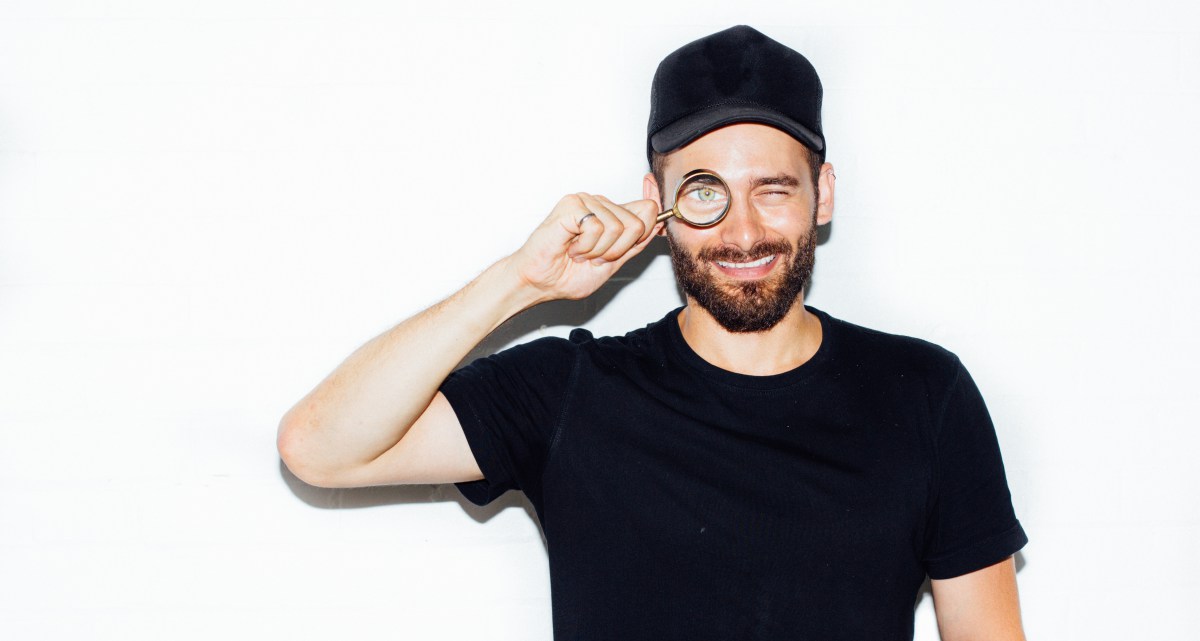I grabbed a matcha latte and spoke about the future of food with Future Food Studio’s Dr. Irwin Adam Eydelnant, a chemical and biomedical engineer using his science chops to cook up groundbreaking food experiences in Toronto, New York, and elsewhere. The most recent project he worked on, the Museum of Ice Cream, celebrated our favorite summertime snack from July 29 to August 31, 2016 in New York.
Cook’s Science: So what are you all about?
Irwin Adam: My real focus was always in technology and its application in areas that help better our lives. Whether through medical research or through food, all the focus has been on improving the human condition in some way or another. I grew up with a single mom who worked like 16, 18 hours a day but was home every single day to make dinner for me and my brothers.
From an early age my connection to food was very strong. During my Ph.D., I started blurring the line between the technology side and the food side, where my skills were and my passions were. I realized there was some potential to do something interesting in that space. I was able to leave academia and go full time opening the Future Food Studio.
CS: So what’s the Future Food Studio do?
IA: Future Food Studio focuses on food experience. We think about the way we interact with food, the way we transform food, and the way food transforms us. That goes from what we put in our mouths to the tools we use to engage with our food, all the way to the spaces in which we experience food.
But ultimately the goal of the studio has been to develop an extra academic research program. I left academia because I didn’t have full alignment with the way that current academic structures function. And I wanted to create my own academic research program. I found that using the studio would be a way to actually fund those pursuits. It’s now been just over two years and we’re now starting to make those forays into the research side of things. We are really looking at how we develop systems that better inform and better feed our bodies.
CS: What’s the craziest way you’ve ever combined your background with food?
IA: I don’t know if this is the craziest but it’s one that resonated. We hosted this dining experience, 80 diners for each round in a five-course meal. The course that really stopped people in their tracks was a soup course. We’re inside this dome with a 360-degree projection and all of a sudden a spotlight emerges on a drummer and simultaneously every guest has a bowl of soup served to them. They’re all watching this drummer and he starts playing a beat, slowly, and as he starts building up, vibrations start appearing inside each of the bowls. As he crescendos and goes faster and faster, each bowl in front of each guest turns into a fountain that’s responsive to his playing. That was the one piece we’ve done that would get rounds of applause, sometimes standing ovations. Who’s made a course of food that would get standing ovations?
CS: That’s awesome. How do you make these experiences a little more accessible?
IA: A huge part of everything is about democratization of food. We run a couple of high school programs back in Toronto that focus on getting kids from priority schools into the food sphere, and getting them involved in understanding all of the different aspects of food they’ve never seen before, whether that’s community gardens, talking about three star Michelin restaurants, pulling them out of their world, which for many is the dollar pizza shop and their home cooking. When we present edible clouds to kids, their minds are blown. I let the kids decide what flavor they’re going to get. I have this one school and someone was like “fried chicken” and I’m like okay! We’re going to do a fried chicken cloud. That’s a room of 50, 60 kids who are now thinking they’re not limited by what they thought was possible. There’s much more available to them.
CS: So what does the future of food look like? What will we be eating in 2030?
IA: I don’t know that the fundamental forms of what you’re eating are changing but the healthfulness of those foods will both be more transparent and more evident… By 2030 I would very much hope as well that we will have more hardware that informs us about our food, both external and internal. We are moving to a point of time quickly where the human body and various technologies are becoming closer and closer.
CS: So you’re pushing singularity type stuff?
IA: Singularity is quite real and that’s so much of the trajectory that we’re moving into.
CS: Anything else?
IA: I can’t reiterate enough how much the goal of the work is really to make people think, make them more intentional and conscientious around food and consumption. There’s a lot of people working in this space to completely transform the way we eat tomorrow to be more sustainable, healthier, better for the world around us. More transparent.
Not only do we all have the ability to contribute to our ecosystem, but we have the responsibility to. Food is fundamental to every single human on earth, which means every single human on earth has the responsibility to hold themselves accountable.
This interview has been condensed and edited for clarity.
Photography by Future Food Studio.


